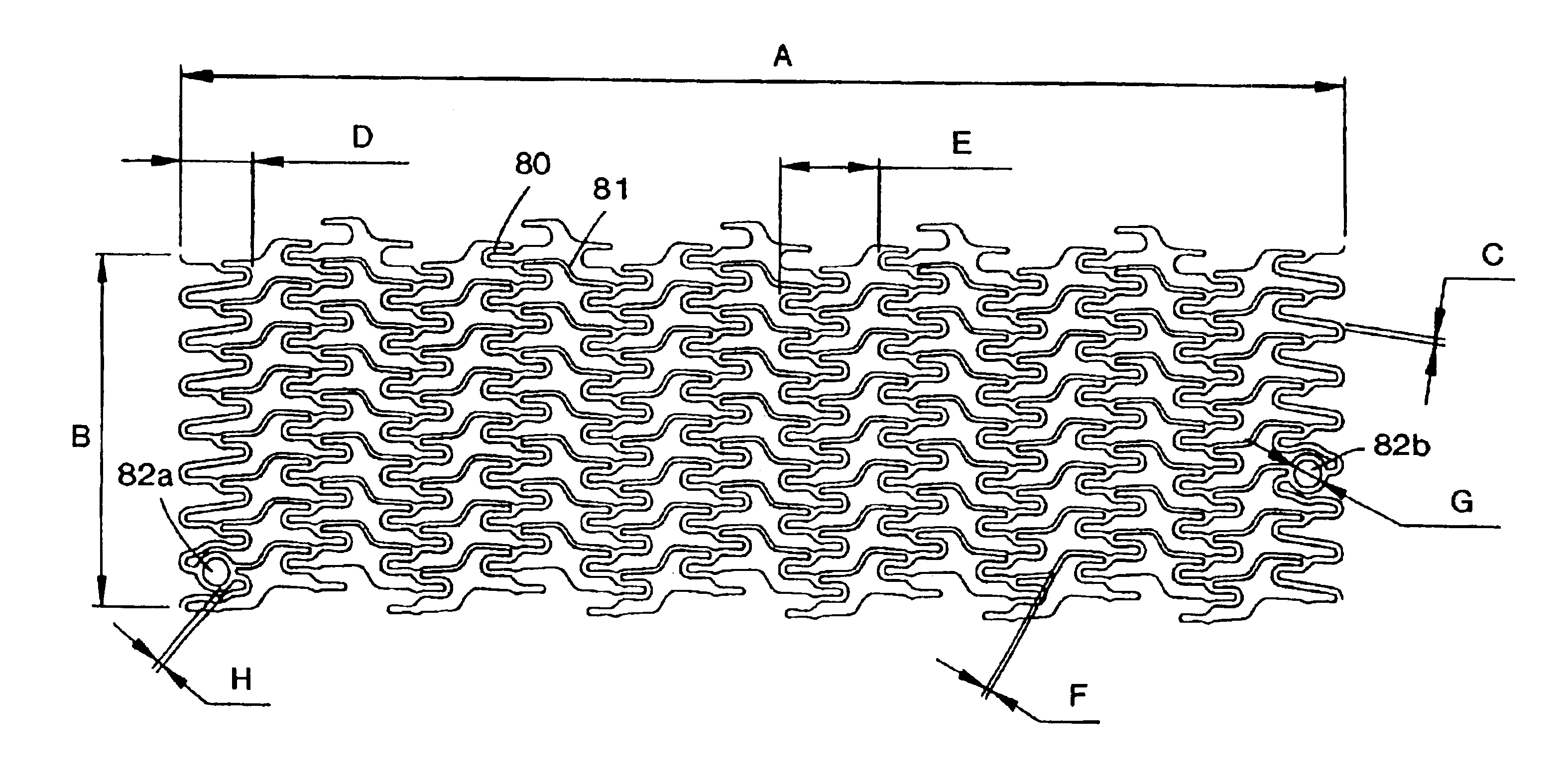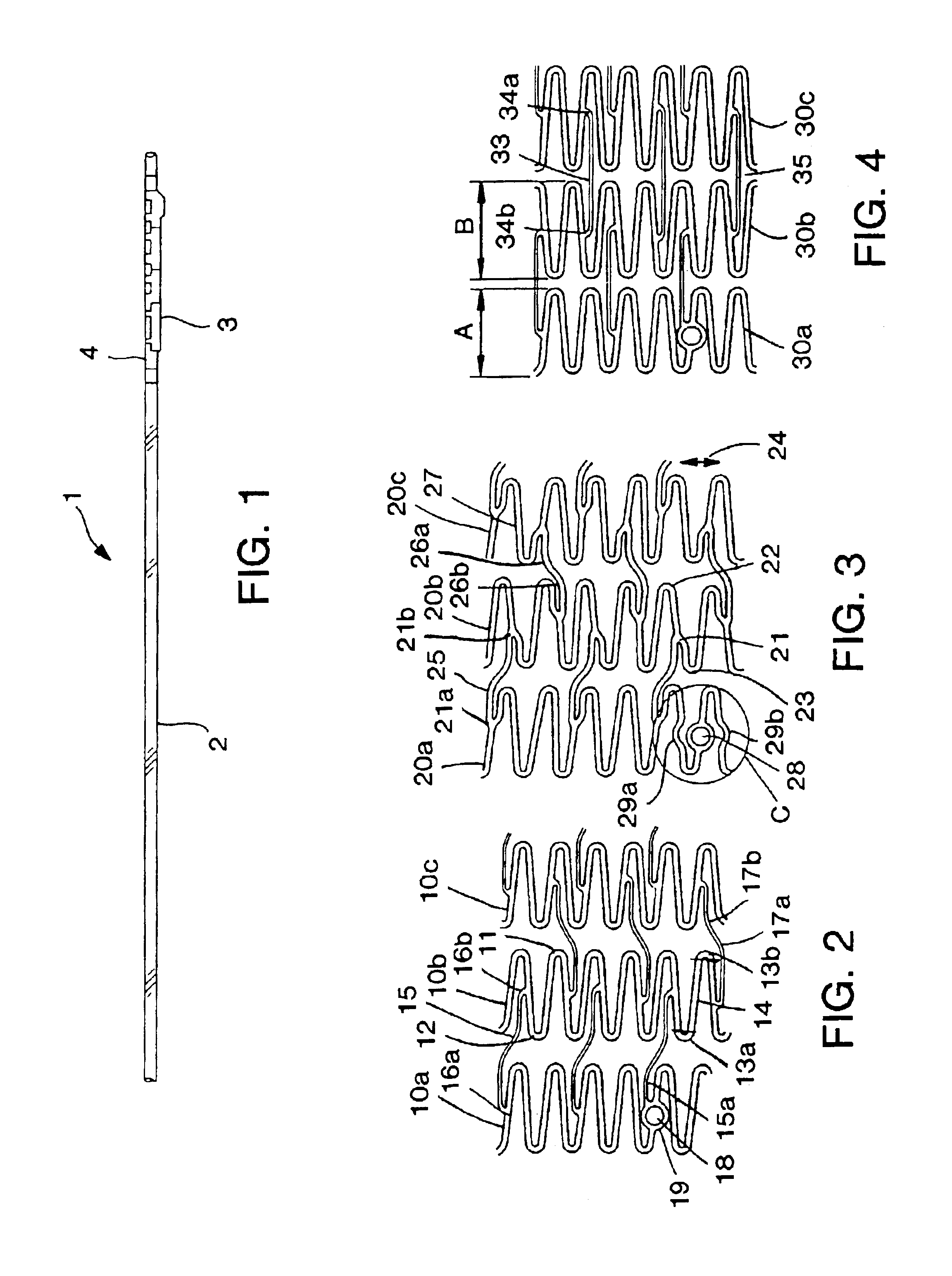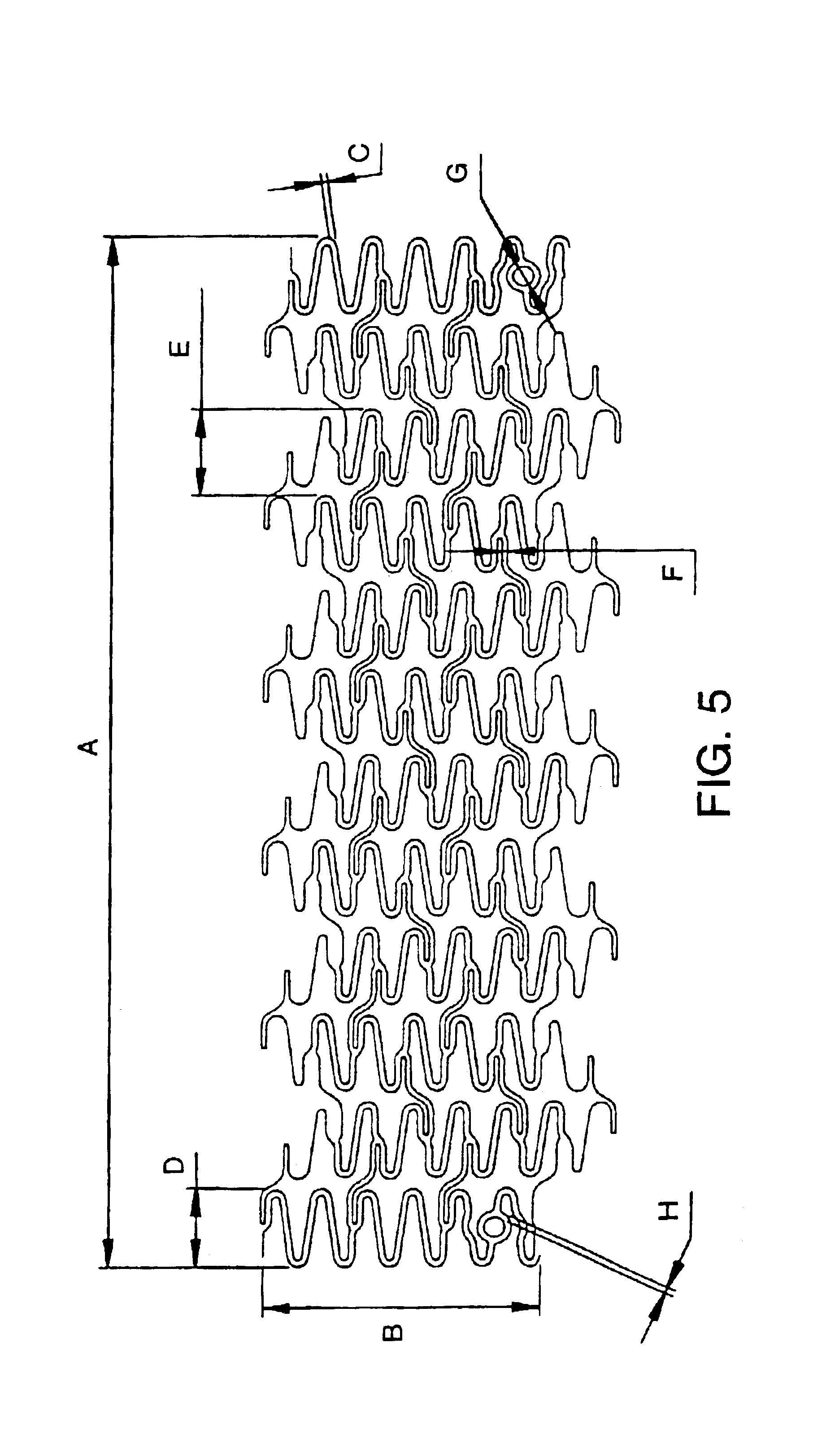Medical device for intraluminal endovascular stenting
a technology of endovascular stenting and medical devices, which is applied in the field of intraluminal endovascular stenting, can solve the problems of stent radial enlargement, difficulty in crossing a narrow lesion, and interference with the ability to crimp the stent onto the catheter, so as to prevent the shortening of the stent and promote longitudinal flexibility
- Summary
- Abstract
- Description
- Claims
- Application Information
AI Technical Summary
Benefits of technology
Problems solved by technology
Method used
Image
Examples
Embodiment Construction
[0019]Referring now to FIG. 1, the medical device 1 of the present invention includes a catheter 2 and a stent 3 mounted on the catheter 2 in an unexpanded condition. The stent 3 has a hollow, cylindrical body made with a plurality of rings. As shown, the stent 3 is crimped over a balloon 4 affixed to the catheter 2 near the distal end of the catheter 2. The stent 3 can include a variety of configurations as shown in FIGS. 2 to 14 which are shown in an open and flattened configuration as they would appear in an unexpanded and uncrimped condition. The balloon 4 can be practically any balloon suitable for angioplasty procedures and capable of inflation to 8 atmospheres of pressure. A preferred type of balloon 4 is a balloon with multiple folds which permits the stent to expand evenly that is approximately the same length as the stent. In addition to crimping, the stent 3 can be held onto the balloon 4 by retention techniques that are well known to those skilled in the art.
[0020]Referr...
PUM
 Login to View More
Login to View More Abstract
Description
Claims
Application Information
 Login to View More
Login to View More - R&D
- Intellectual Property
- Life Sciences
- Materials
- Tech Scout
- Unparalleled Data Quality
- Higher Quality Content
- 60% Fewer Hallucinations
Browse by: Latest US Patents, China's latest patents, Technical Efficacy Thesaurus, Application Domain, Technology Topic, Popular Technical Reports.
© 2025 PatSnap. All rights reserved.Legal|Privacy policy|Modern Slavery Act Transparency Statement|Sitemap|About US| Contact US: help@patsnap.com



